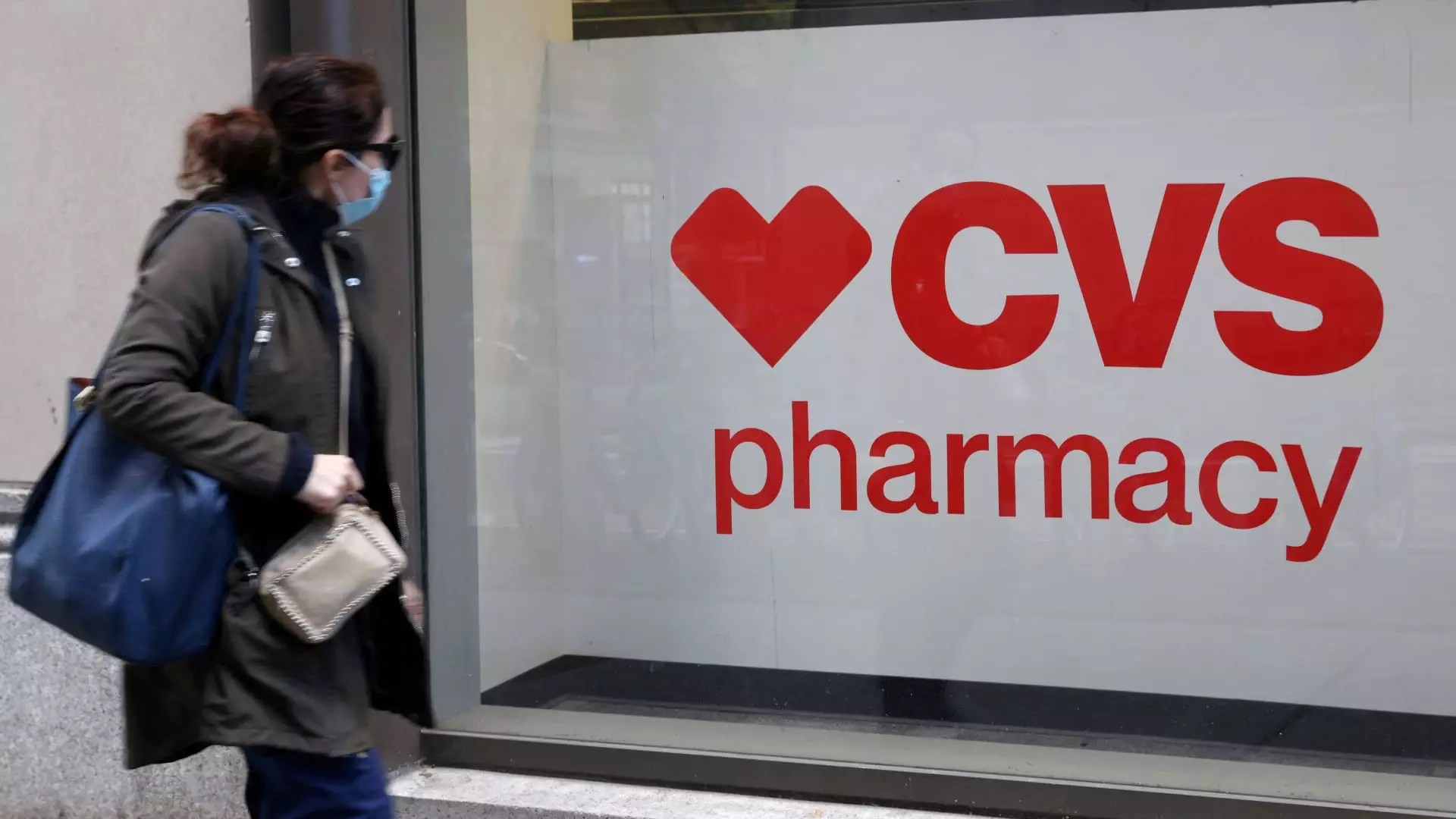The latest earnings report from CVS Health reflects a period of significant challenges and strategic reassessment as the company navigates through a turbulent landscape marked by heightened medical costs and investor skepticism. This analysis will delve seamlessly into the complexities surrounding CVS Health’s third-quarter results, the leadership transition with CEO David Joyner at the forefront, and the broader implications for the healthcare and retail pharmacy sectors.
CVS Health’s third-quarter earnings report reveals a landscape of mixed results that could be interpreted as a bellwether for ongoing struggles within the health insurance and retail pharmacy markets. In terms of earnings per share, CVS reported a disappointing adjusted figure of $1.09, falling short of the expected $1.51. Despite net revenues reaching $95.43 billion—better than analysts predicted—these figures underscore a company grappling with the immediate repercussions of increased healthcare utilization, particularly as patients resume postponed medical procedures stemming from the Covid-19 pandemic.
The financial shortfalls are particularly acute in CVS’s insurance unit, Aetna, where rising medical costs are eroding profitability. Recently reported figures indicate that CVS’s insurance division experienced an operating loss adjusted to $924 million, highlighting the mounting pressures that have diminished investor confidence. Companies in the healthcare sector typically aim to strike a balance between premium collections and medical expenses, yet CVS’s medical benefit ratio has drastically increased from 85.7% to 95.2%, signaling that claims are outpacing premium revenue—a scenario that can be unsustainable for any health insurer.
The appointment of David Joyner as CEO marks a pivotal moment for CVS. His first earnings report as the new leader comes in the context of a company scrambling to restore faith with shareholders following three consecutive quarters of disappointing guidance cuts. Joyner emphasizes the importance of credibility and transparency in his leadership approach, advocating for achievable financial targets and clear paths for performance improvement. However, this may be easier said than done in light of the operational difficulties at hand.
One of Joyner’s immediate moves includes the appointment of Steve Nelson as president of Aetna, a seasoned executive with a wealth of experience in healthcare management. Joyner and Nelson are tasked with not only stabilizing the company’s financial footing but also instilling confidence in an increasingly skeptical market. With shares dropping nearly 27% year to date, they must act swiftly to pivot CVS toward a recovery trajectory.
The third quarter did see a slight uptick in revenues derived from the health services segment, yet it also faced declining operational metrics. The decline in the number of processed pharmacy claims suggests a growing competitiveness in the retail pharmacy sector, as consumers may explore alternative providers. This increasing competition highlights the necessity for CVS to innovate and adapt its service offerings while aligning them with emerging consumer expectations and healthcare trends.
CVS has initiated several restructuring efforts aimed at trimming down expenses, including a reported $2 billion in cuts, which involves significant workforce reductions and the closure of up to 271 retail stores. These moves are indicative of the company’s response to a rapidly changing healthcare environment and an acknowledgment of operational inefficiencies. However, the effectiveness and repercussions of these layoffs remain to be seen—particularly when it comes to employee morale and customer service.
Despite these challenges, CVS generated robust sales in its pharmacy and consumer wellness division, reporting $32.42 billion, marking a 12% increase year-over-year. This growth can be attributed to increased prescription volumes. Yet, while the narrative of rising sales sounds promising, it’s crucial to analyze the underlying pressures such as decreased store counts and reimbursement challenges. Indeed, Joyner highlighted that CVS’s share in the retail pharmacy market has reached an all-time high at 27.3%. However, this statistic does not negate the broader issues facing the company in terms of market stability and customer retention.
CVS Health’s third-quarter report paints a picture of a company at a crossroads. With leadership shifts, rising medical costs, and pressures from activist investors, the road ahead appears fraught with challenges requiring decisive action. David Joyner’s commitment to establishing credibility and achieving transparency must translate into tangible outcomes. As CVS seeks to realign its strategic focus, the emphasis on performance improvement amidst a backdrop of evolving healthcare demands will be critical. The next steps for CVS Health will dictate not only its immediate financial performance but also its long-term positioning within the complex landscape of healthcare and retail pharmacy services.

